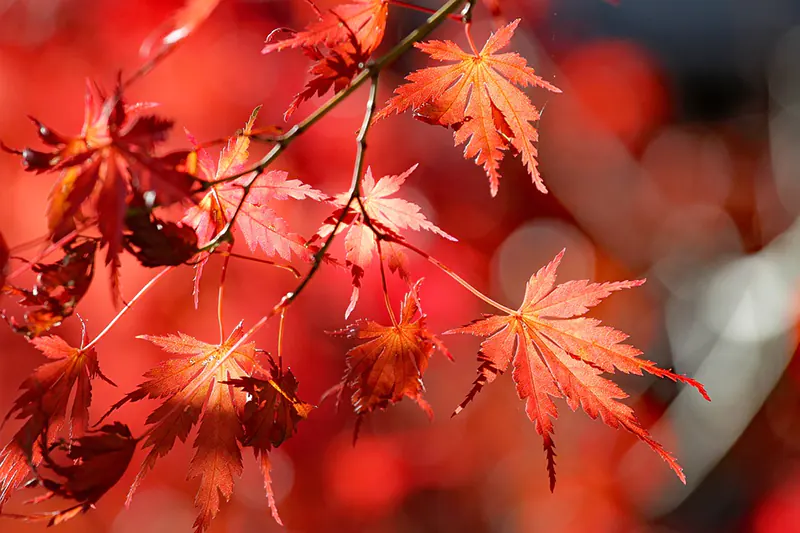How Do You Clone A Japanese Maple Tree?
Cloning is one of the best methods of asexual reproduction, where no different cells are involved. Instead, clones are made from a mother tissue culture so that all children will have the same DNA sequence in their mitochondria and nuclei. In earlier days, single-celled organisms were cloned like bacteria, protozoa, and more.
With developments in biological and molecular science and techniques, one can also clone multicellular living beings. On a bigger scale, the method of cloning has been applied to a plant’s asexual reproduction since its more accurate than vegetative propagation. It creates a replica of the mother plant.
Recently, a report was published stating facts about implementing the tuber cloning propagation technique in yam production. According to it, about 12 markers were used to identify the various features in cloned yams and determine the age. This same method is now applied to reproduce more plant species, including the Japanese Maple trees. 
Is It Possible To Clone Japanese Maple Trees?
Yes, it is possible to clone the Japanese Maple trees, but only when the conditions are met and fulfilled successfully. It is easy to reproduce asexually and doesn’t involve advanced techniques like biomolecular engineering, DNA sampling, tissue culture, and more. Unlike other plant species, one can only produce identical offspring in their houses.
Main Techniques For Cloning The Japanese Maple
Japanese Maple can be cloned in two main ways described below.
1. Cutting
Cutting is a process of cloning or asexual reproduction where a twig with leaves, nodes, and buds, is cut from the main plant. It is then potted separately in a controlled environment until the roots grow. Once the roots have grown, the plantlet is transferred to a gardening pot or bed for further growth. Here, the offsprings produced are a replica of the parent plant because no other variety is involved.
2. Grafting
Another method for cloning the Japanese Maple trees is grafting. Here, two similar or dissimilar varieties are chosen. Then, one plant’s trunk (also known as scion) is placed into the root of another variety (known as stock). Due to cell division, the joint between the scion and stock will get sealed, and the cloned plant will have characteristics of both the chosen varieties.
Out of these two methods, cutting is the easiest way to create clones as it does not involve any complicated technique like grafting. That’s why it’s used for regular asexual reproduction, where the primary purpose is to create more offspring. On the other hand, grafting is used in scenarios where desired characteristics of two different plants need to be included in a single entity.
Environmental Conditions Required For Cloning
To ensure that the cloned sample can grow and mature into a full Japanese Maple tree, one needs to maintain the environmental conditions at the optimal level. Following are the main requirements that will facilitate the growth of the cloned plant and its survival rate.
- The best time for cloning the Japanese Maple is late spring and early summer. If you consider the late summertime or monsoon, the clone won’t survive due to high humidity. Similarly, early spring can cause freezing of the roots, thereby causing death,
- The soil in which the Japanese Maple plant will be grown should be airy and loose. Clayey soil is not ideal because it retains maximum water that causes damage to the roots.
- Fertilizers are essential for faster growth, provided the products are made from organic ingredients.
- The soil should have an excellent drainage system to prevent waterlogging with ease.
Importance of cloning Japanese Maple plant
Cloning is the fastest way of reproduction. Therefore, more offsprings of the Japanese Maple can be created without waiting for the entire lifecycle of the mother plant. Also, cloning will help create the replica with precision and more accuracy.
Step-by-step Guide For Cloning Japanese Maple Through Cutting
The cutting process is more straightforward, but the steps need to be followed chronologically without missing a single step. Failure to abide by the instructions will result in a dead clone plant or a disaster.
Step 1: Choosing and cutting the twig to be planted
The first step is to choose a healthy twig with buds and nodes, along with leaves from the parent plant. Then, to know whether the selected twig is best for cloning or not, bend it. If the twig snaps, it’s ready for cloning. But if it doesn’t break, you need to choose another twig. The twig’s length should be within 4 to 6 inches. It would be best to make a clean cut using a sharp gardening knife with an angle.
Step 2: Preparing the soil mix and pouring into the pot
The next step will involve preparing the soil mix required for cloning the Japanese Maple twig. It should have both peat moss and part perlite in a ratio of 1:1. Once done, pour the mix into the pot till its brim and press it down. This will help you maintain a gap of 0.25 inches between the pot’s rim and the soil surface.
Step 3: Aerating and watering the soil
It is crucial to aerate the soil properly so that the root cells can breathe adequately. For this, water the soil and let it drain out of the pot completely. It will help in setting the soil firm and maintaining its texture. Then, using a hand shovel, mix the soil and create air holes.
Step 4: Preparing the twig and the soil for planting
Once done, create a hole measuring about 2 inches in depth right at the middle of the pot. Again, you can use a pencil or simply the handle of the hand shovel. As for the twig, remove all the leaves from the lower end that will go into the pot, leaving the buds and leaves from the top only.
Step 5: Planting and watering the potted twig
After this, place the twig’s lower end into the soil and press down it firmly with your hand. Make sure that the twig’s end is covered well to stay upright without any support.
Step 6: Final preparation and placement of the potted twig
The last step involves covering the pot with transparent plastic. This will help you create a mini greenhouse for trapping the moisture and helping in faster growth. Next, place the pot in an area where sunlight is not too strong. It will take about six weeks for the buds to bloom and leaves to grow from the nodes.
Step-by-step Guide For Cloning Japanese Maple Through Grafting
Since grafting is complicated, everything needs to be done with utmost precision and accuracy. Therefore, it can be difficult for you to clone Japanese Maple using this technique, so we have briefly described the details.
Step 1: Choosing two Japanese Maple plants
Firstly, you must choose the Japanese Maple plants you want to clone. Then, ensure that both plants have good characteristics like immunity to disease, high yield, longer lifespan, bright-colored foliage, and more.
Step 2: Preparing the stock and scion
Once the plants are chosen, cut them into halves. You need the trunk with roots from plant A and trunk with shoot system from plant B. Place the stock (plant A) into the soil and make an angled incision at the surface. Next, cut the lower end of the scion (plant B) to fit into the groove of the stock quickly.
Step 3: Inserting the scion into the stock
Now insert the scion into the stock properly so that both the plant parts are in direct contact with each other. Make sure that no excess gap is there. To ensure optimal balance, cut down excess twigs and branches from the shoot, leaving only the healthy twigs, nodes, buds, and a few leaves.
Step 4: Sealing the joint area
Place wet cotton around the joint region of the scion and stock while ensuring that the surface is adequately covered. Next, wrap a cloth piece over the cotton to bind both parts tightly. This will prevent the scion from detaching or falling off.
Step 5: Watering the cotton/cloth at the joint
You need to water the cotton every day to facilitate cell division. Once the scion and stock join after cell division, you can open the cloth piece and take off the cotton. Then, repot the cloned sample to a bigger pot and grow it regularly.
Final Words
Cloning the Japanese Maple is easier as compared to other plants. But you will get the expected results only when the process followed is appropriate and as per the instructions. Clones are vulnerable, and slight changes in the environmental and biological conditions will result in retarded growth or death of the samples. Therefore, be very cautious when planting the cut twig or attaching the scion and stock during grafting.
Besides, not all varieties of the Japanese Maple can be cloned. Therefore, you should cross-check whether the type you have chosen can be reproduced through cuttings or grafting or not. Also, make sure to add fertilizers to the soil so that the cloned samples can grow faster and healthier. Also, ensure that the pots are placed in areas where the plants won’t be exposed to direct sunlight.







